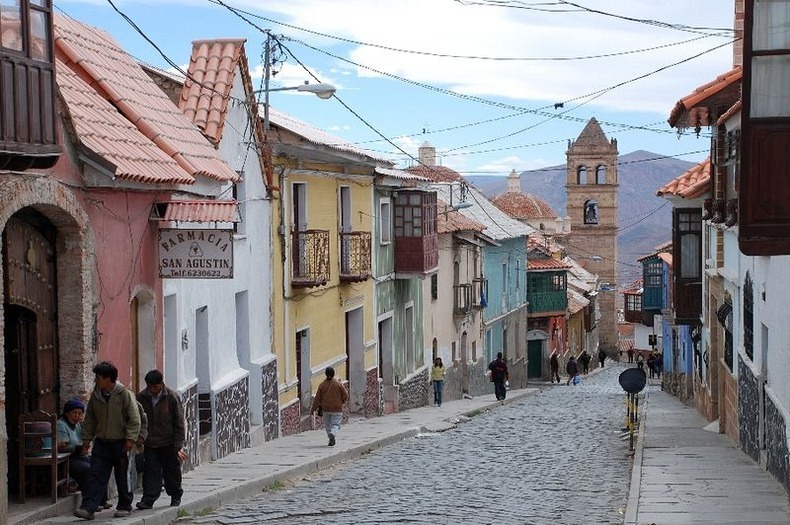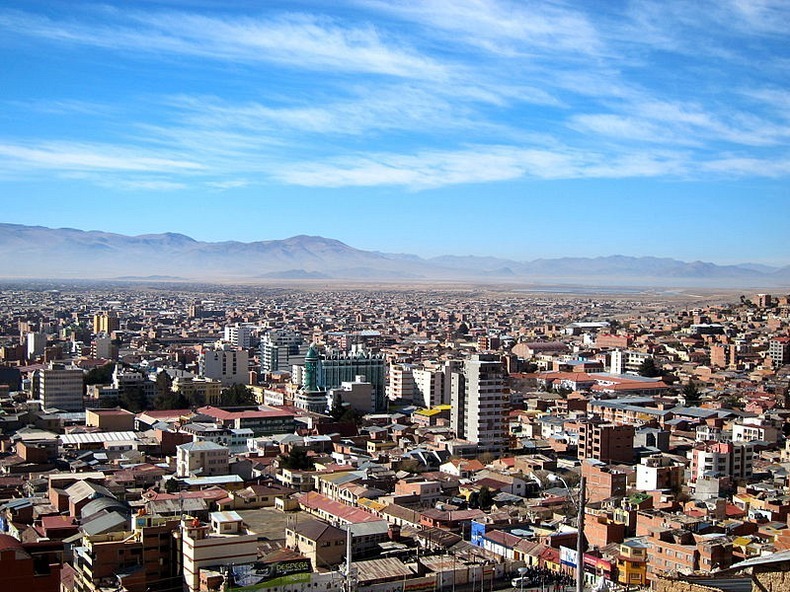Like the microscopic bacteria, human beings too have learned to evolve and flourish in extreme conditions – from the scorching heat of the Sahara to the freezing tundra of Siberia. Even in inhospitable, high mountains where life supporting oxygen is low, humans have been living for millennia. Some 140 million people live permanently at high altitudes above 2,500 meters or 8,200 feet, in the Himalayas in Asia, the Andes in South America and in the Ethiopian Highlands of Africa, and some actually prosper in sprawling cities. Here we present 7 very high cities and settlements, each of which is located above 10,000 feet in elevation.
La Rinconada
La Rinconada in Peru is an old gold-mining camp in the remote Peruvian Andes, that has grown to ‘major city’ status. Over 50,000 people live in this mountainous city at an altitude of 16,732 feet (5,100 m). It lays claim to the title of “highest city in the world.”
Despite having an economy fueled almost entirely by the nearby gold mine, the town’s infrastructure remains poor. The city has no plumbing and no sanitation system, and there is significant contamination with mercury due to the mining practices.
Almost all the residents of this city are workers who emigrated to the remote location hoping to secure work and stake their claim in the riches. They work through a peculiar system of payment called Cachorreo. Employees work for 30 days without payment, and on the 31st day they are allowed to take as much ore from the mine as they can carry. Whatever the miners are able to extract from that ore is theirs. Despite the companies utilizing such a non-traditional system of payment, miners continue to flock to the region. The population of La Rinconada has skyrocketed over 230% in the last decade.
El Alto
The city of El Alto is one of Bolivia's largest and fastest-growing urban centers. With a population of over 1.1 million at an altitude of 13,615 feet (4150 meters), it is also one of the highest major cities in the world. At one time, El Alto was merely a suburb of the adjacent La Paz (see pictures of this incredible mountain city) on the Altiplano highlands, but due to the migration from Bolivia's rural areas to the La Paz region during the 1950s, the region grew and in less than 40 years laid claim to “city status” of its own.
The region where El Alto stands is dry and inclement and was therefore uninhabited until 1903, when the newly built railways from Lake Titicaca and Arica reached the rim of the canyon, where the La Paz terminus, railyards and depots were built along with a settlement of railway workers. In 1925 the airfield was built as base for the new air force which attracted additional settlement. In 1939 El Alto's first elementary school opened. El Alto started to grow tremendously in the 1950s, when the settlement was connected to La Paz' water supply. Before that all water had to be transported from La Paz in tanker vehicles. 1985 the district of El Alto and surroundings was politically separated from the City of La Paz and in 1987 El Alto was formally incorporated as a city.
Potosi
Another candidate from Bolivia, Potosi, is located at an elevation of 13,420 ft (4,090 m). Founded in 1545 as a mining town, it soon produced fabulous wealth, becoming one of the largest cities in the Americas and the world, with a population exceeding 240,000 people. Potosi lies at the foot of the Cerro de Potosí - a mountain popularly conceived of as being made of silver ore, whose peak at 4,824 meters has always dominated the city. The Cerro Rico is the reason for Potosí's historical importance, since it was the major supply of silver for Spain during the period of the New World Spanish Empire.
It is from Potosí, that most of the silver shipped through the Spanish Main came. During 1556 to 1783, 45,000 short tons of pure silver were mined from Cerro Rico of which 9,000 short tons went to the Spanish monarchy. Due to such extensive mining, the mountain itself has diminished in height by a few hundred meters.
In 1672, a mint was established to coin silver and water reservoirs were built to fulfill the growing population's needs. At that time more than eighty-six churches were built and the city's population increased to nearly 200,000, making it one of the largest and wealthiest cities in the world. After 1800, the silver mines were depleted, making tin the main product. This eventually led to a slow economic decline. Nevertheless, the mountain continues to be mined for silver to this day. Due to poor worker conditions, lack of protective equipment and constant inhalation of dust, the miners still have a short life expectancy with most of them contracting silicosis and dying around 40 years of age.

Shigatse
Shigatse is the second largest city in the Tibet Autonomous Region (TAR) of the People's Republic of China. With a population of 100,000, it is one of the larger cities of Tibet. The city is located at an altitude of 12,600 ft (3,840 metres) at the confluence of the Yarlung Tsangpo (aka Brahmaputra) river and the Nyang River (Nyang Chu or Nyanchue) in west Tibet. Shigatse lies on flat terrain surrounded by high mountains, and the urban area is located just south of the Yarlung Zangbo River, located in the south-central Tibet Autonomous Region. The city was the ancient capital of Ü-Tsang province, and currently is the administrative centre of the modern Shigatse Prefecture, an administrative district of the TAR.
Juliaca
Juliaca is San Roman's capital city in the Puno Region, of southeastern Peru. It is the region's largest city with a population of 225,146 inhabitants (as of 2007) and located at 12,549 ft (3,825 metres) above sea level, on the Collao Plateau. It is the largest trade center in the Puno region. It is also a major transit point in the region and has strong ties with Peru's southern cities, including Arequipa, Puno, Tacna, Cuzco, Ilo, and with the Bolivian Republic.
Oruro
Founded on November 1, 1606 as a silver mining center in the Urus region, Oruro is now a major city in Bolivia with a population of 235,393 (2010 census), located at 12,159 ft (3,706 m) above sea level. After the silver mines exhausted, Oruro was reestablished in the late nineteenth century as a tin mining center. For a time, Oruro’s La Salvadora tin mine was the most important source of tin in the world. Gradually, this resource became less plentiful, and Oruro again went into a decline, although its primary employer is still the mining industry.

Lhasa
Located at the bottom of a small basin surrounded by the Himalaya Mountains, Lhasa has an elevation of about 11,800 ft (3,600 m) and lies in the center of the Tibetan Plateau with the surrounding mountains rising to 5,500 m (18,000 ft). The Kyi River (or Kyi Chu), a tributary of the Yarlung Zangbo River, runs through the southern part of the city. This river, known to local Tibetans as the "merry blue waves", flows through the snow-covered peaks and gullies of the Nyainqêntanglha mountains, extending 315 km (196 mi), and emptying into the Yarlung Zangbo River at Qüxü, forms an area of great scenic beauty.
Lhasa is the second most populous city on the Tibetan Plateau having a population of over 550,000. The city contains many culturally significant Tibetan Buddhist sites such as the Potala Palace, Jokhang temple and Norbulingka palaces, many of which are located in Chengguan District, the city seat.
A satellite image shows the mountainous terrain surrounding Lhasa. Photo credit
The famous Potala Palace. Photo credit






























Cerro de Pasco, Peru 14370 ft (4380 m)
ReplyDelete147,126 people
Potosi (Bolivia) quasi 4700m
ReplyDeleteLa Paz Bolivia 3650m
ReplyDeleteLita g in the sichuan province of china is 4000 meters and population of 50 000.
ReplyDelete